How would you like to extend the amount of juice you get from citrus fruit by seven times? Super juice (superjuice) is made using a simple mathematical formula, citrus peels, juice, and citric acid. It is used in cocktails, like a tamarind margarita, but can be substituted for lemon juice or lime juice in other recipes too!

My son, Scott, is a pretty great cook, self-taught barista, (see his moka pot iced latte recipe), and mixologist! What can I say, I passed down the gene that mom passed down to me, although he often jokes that the gene skipped a generation and went straight to him! 😐
Since Scott enjoys making cocktails, he goes through a lot of citrus juice. After doing a little research, he learned how to make super juice, which he now always has on hand to use in his various cocktails.
It was first created and made popular by Nickle Morris, a bartender from Louisville, Kentucky. Since then, super juice has gained in popularity across the internet.
It is a citrus-based juice (usually lemon or lime) prepared with citrus peels, juice from a single fruit, citric acid, malic acid, and water.
Additionally, there is a specific formula for making orange super juice, and grapefruit super juice, which are acid-adjusted to have the same acidity as you would expect from lemon or lime, making them the perfect way to add some creative flair to classic recipes.
What would you rather have in your fridge, a single jar of this magnificent juice, or a bag of citrus taking up valuable space?
Jump to:
😍 Why You'll Love This Recipe
- Super juice is far more resistant to oxidization than freshly squeezed citrus juice, keeping it tasting vibrant and fresh for up to a month.
- It is very cost-effective. One single fruit will give you a large amount of juice with amazing citrus flavor!
- For less acidic fruits like oranges and grapefruit, your juice will be acid-adjusted so you can enjoy the flavors of any citrus fruit with the high acidity of a lemon or a lime, especially in cocktails!
- Due to the significantly prolonged freshness of superjuice, it's the perfect option for pre-batched cocktails.
- When a recipe calls for a large amount of lemon or lime juice, and all you have is one lemon or lime, you can extend the amount of juice significantly by making this recipe!
🛒 What You Need For This Recipe
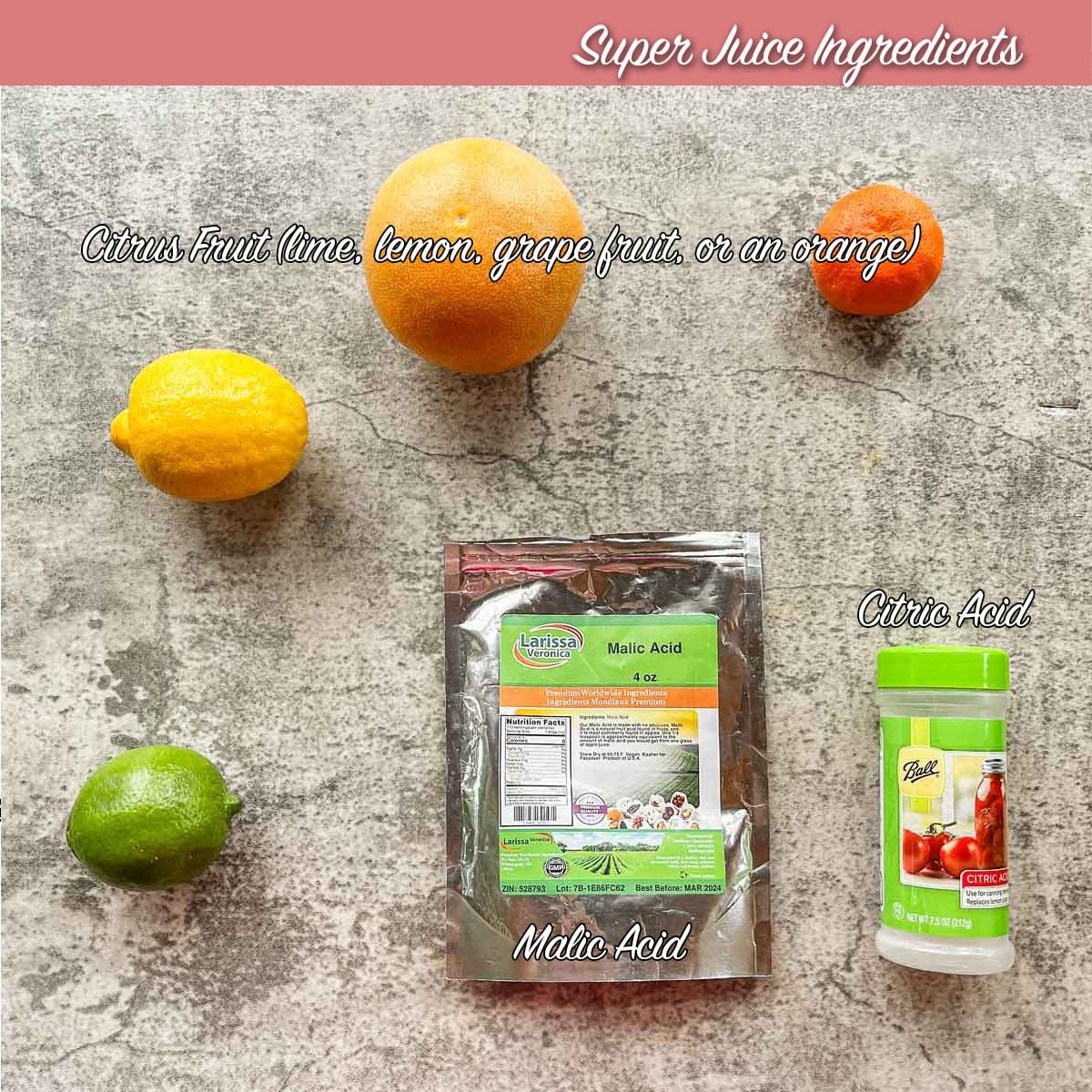
🔖 Ingredients & Substitutions
- Citrus: Any citrus based on the type of juice you want to make. Choose from organic lemon, organic lime, organic orange, organic tangerine, or organic grapefruit.
- Acids: Citric acid and/or malic acid (if you don't have malic acid, you can add citric acid in a 1:1 ratio with the weight of the peels, but I recommend including the malic acid).
- Water: Cool, fresh water, filtered if possible.
🫙 Helpful Tools
- Y peeler or vegetable peeler
- kitchen scale (paid link)
- fine mesh strainer
- 4-ounce mason mars
- quart-sized mason jars
- funnel
- flip top bottles
🍊How to Make Super Juice
Step 1: Thinly peel the citrus using a Y peeler or a vegetable peeler, leaving the pith behind. Weigh the peels in a small jar or Tupperware placed on a kitchen scale, and set units to grams.
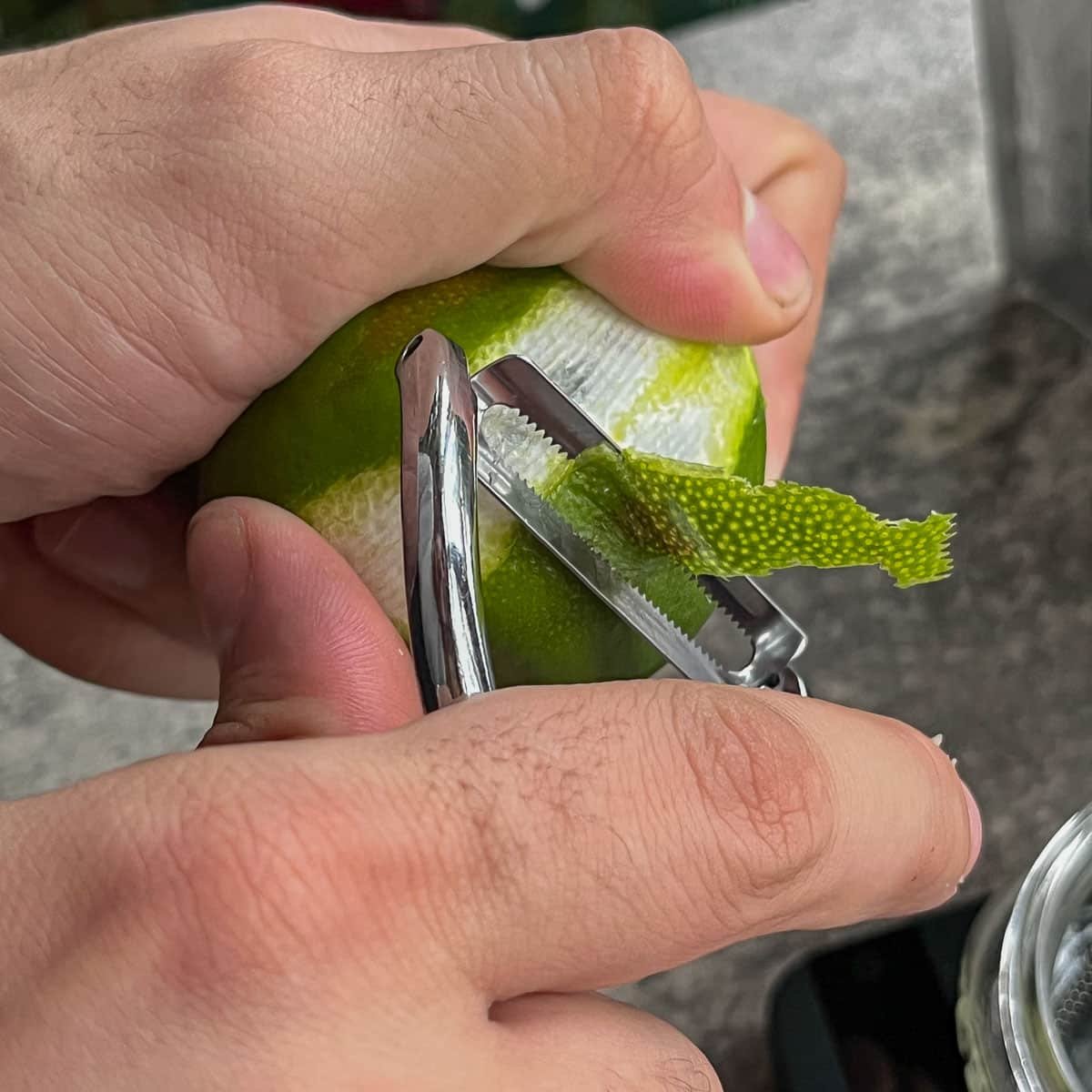
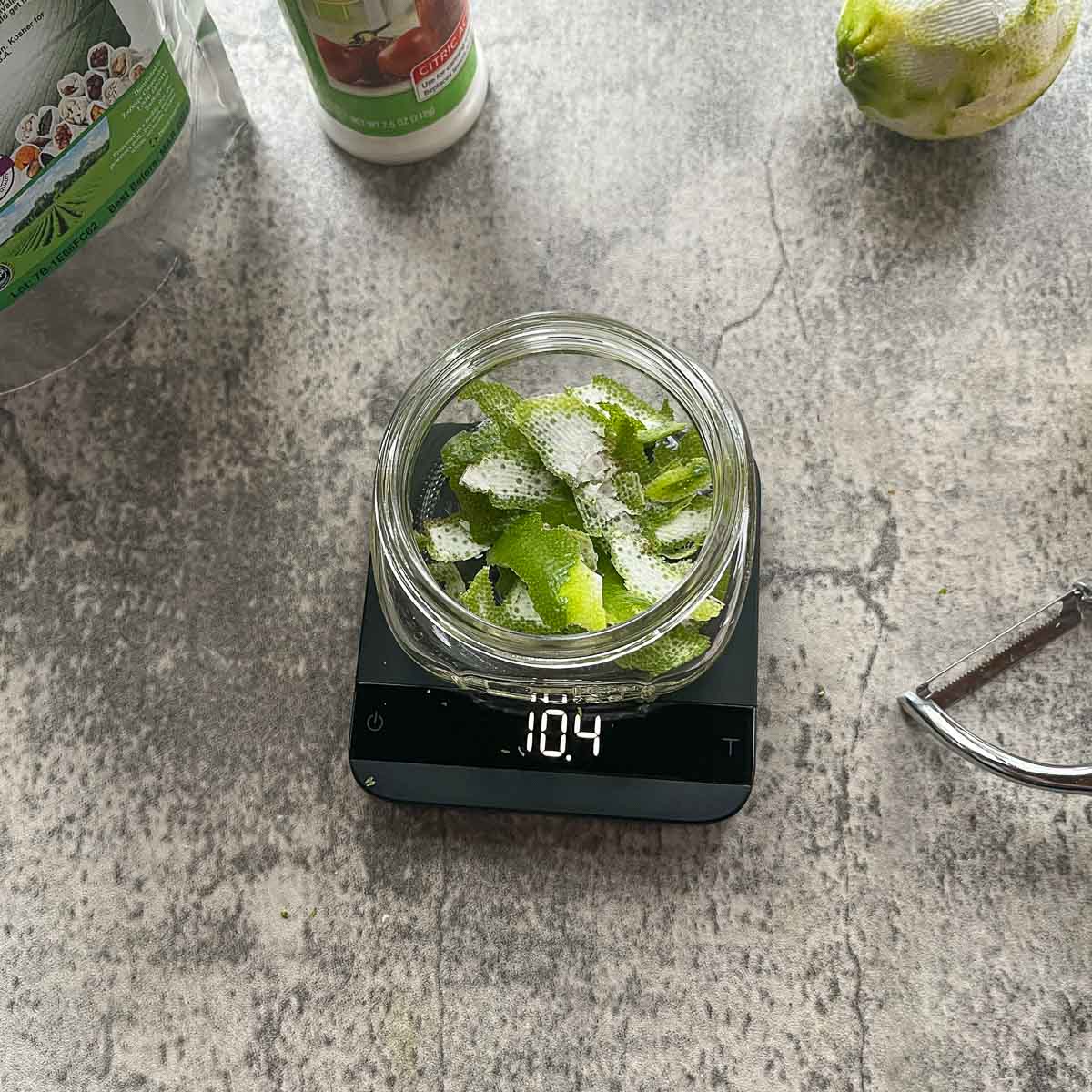
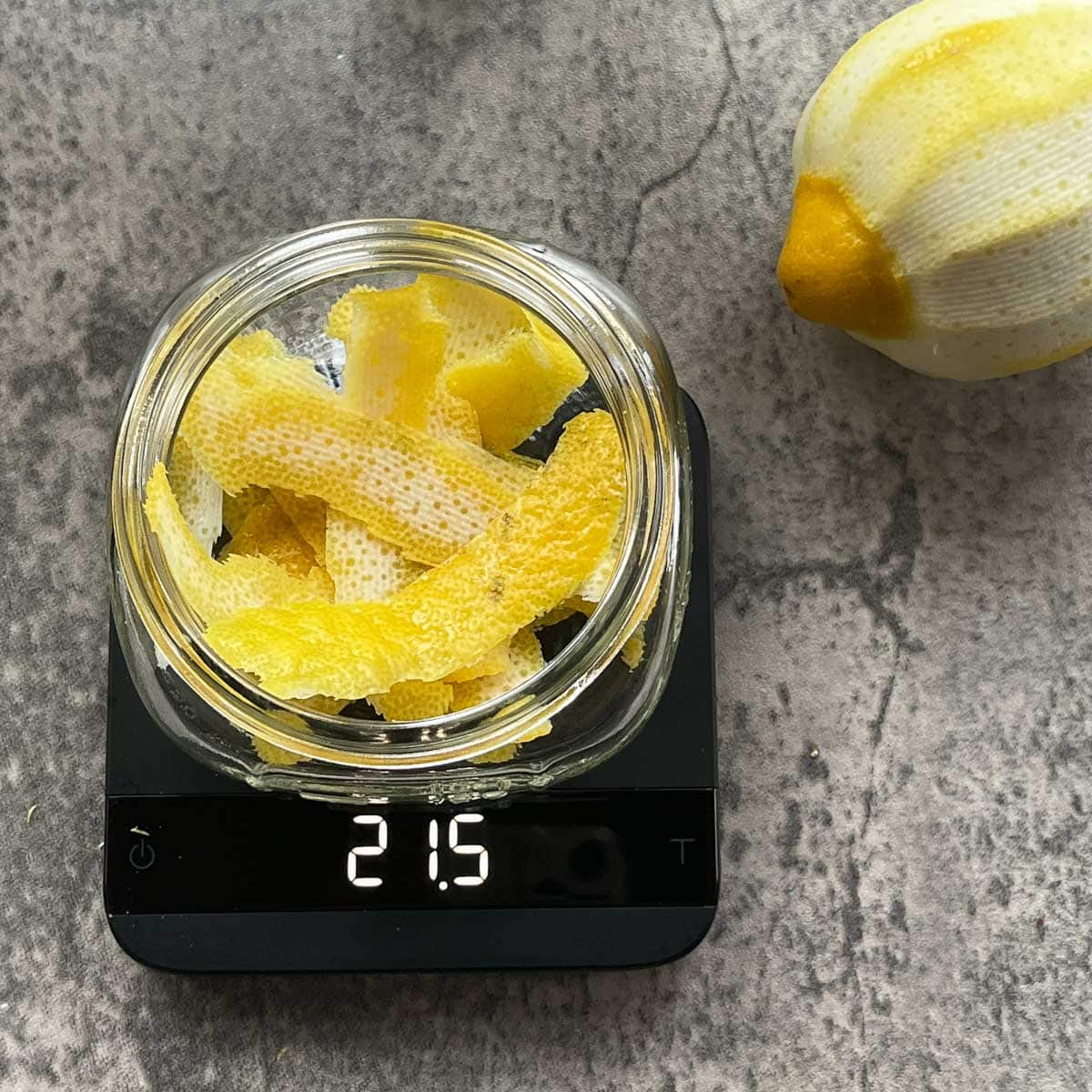
Pro Tip: After placing the jar on the scale, make sure to reset (tare) the scale back to zero, before adding the peels so that you're not including the weight of the jar.
Step 2: With the total weight of the peels now determined and written down, multiply this number by the ratios in the chart below. For lemons, no math is required, you will only add citric acid equal to the weight of the lemon peels.
| Fruit | Citric Acid | Malic Acid |
|---|---|---|
| Lemon | x 1.0 | N/A |
| Lime | x 0.66 | x 0.33 |
| Orange/ Tangerine | x 0.9 | x 0.1 |
| Grapefruit | x 0.8 | x 0.2 |
Step 3: Reset the scale and add the appropriate amounts of acids to the peels, then tighten the lid. Shake jar to evenly disperse the acids among the peels, and let it sit for 1-2 hours, shaking occasionally. During this time, the acids will extract the essential oils from the peels and will make a slurry.
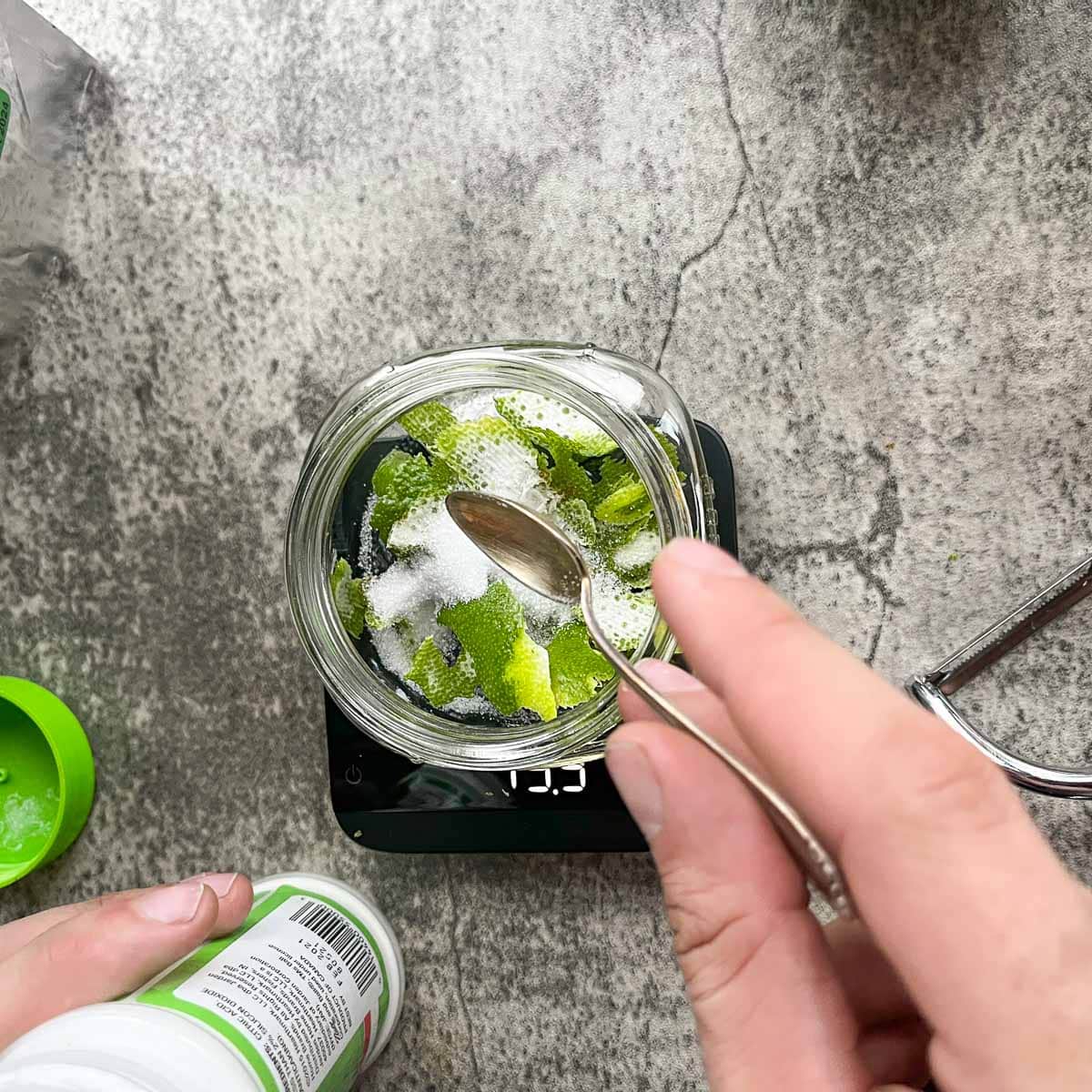
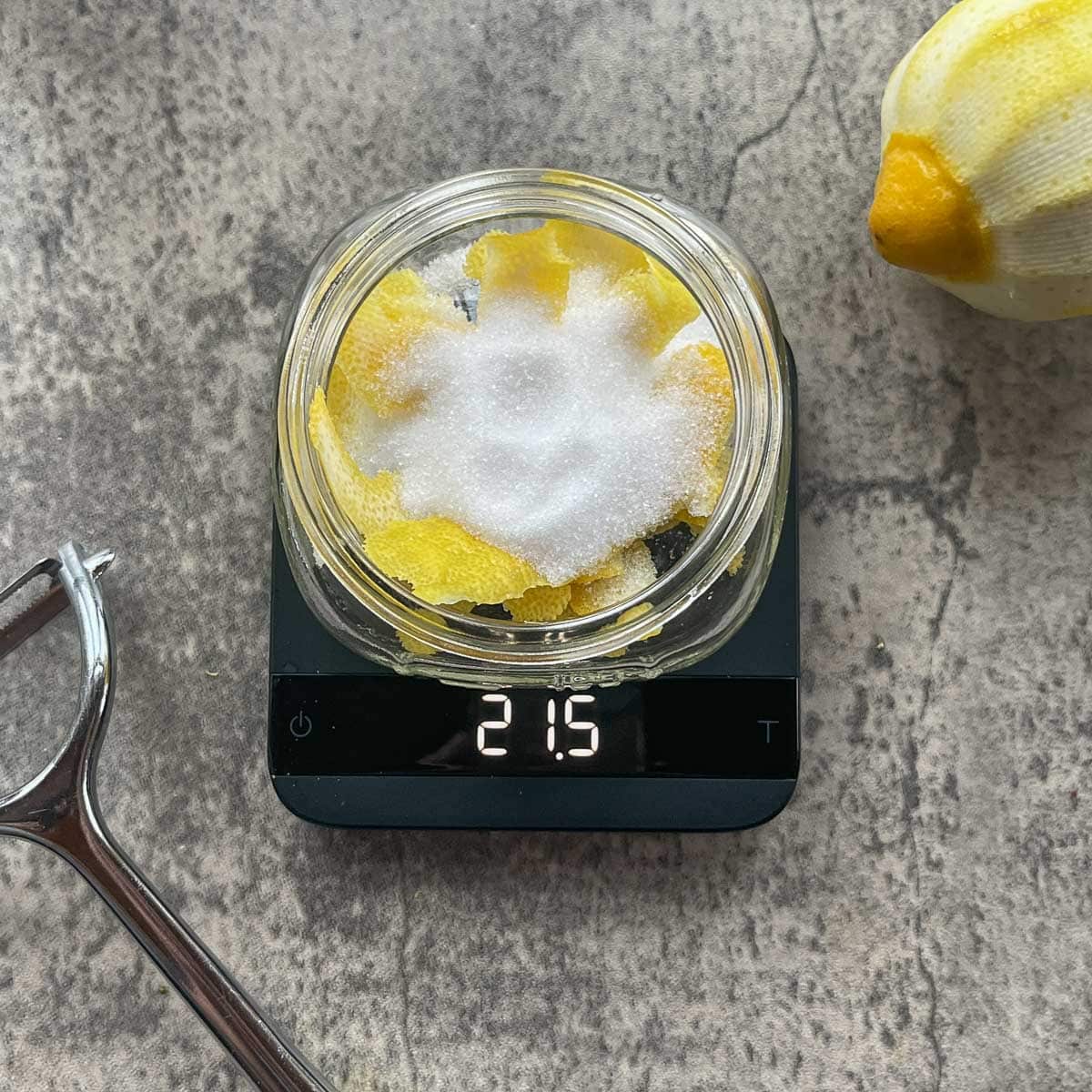
Would you like to save this recipe?
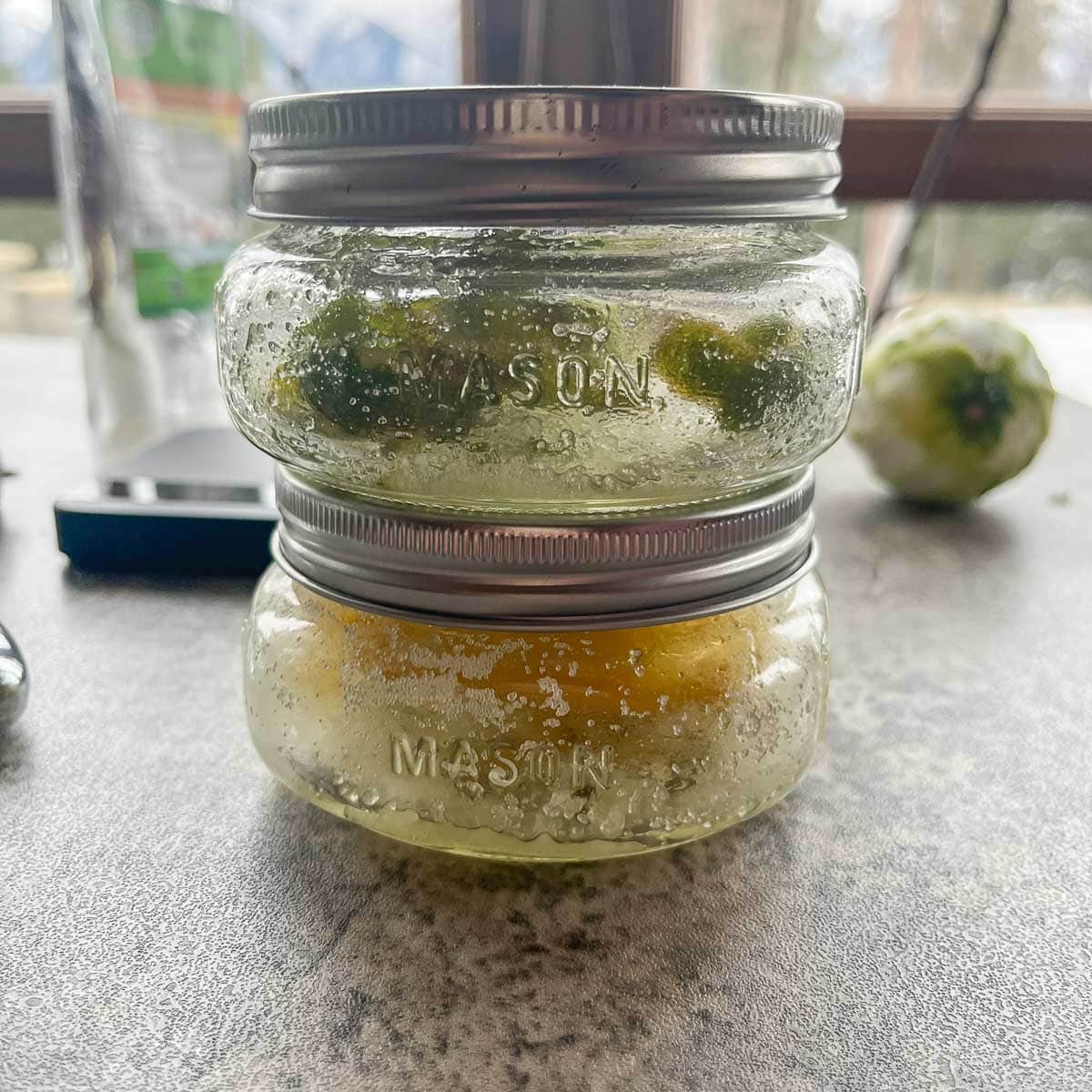
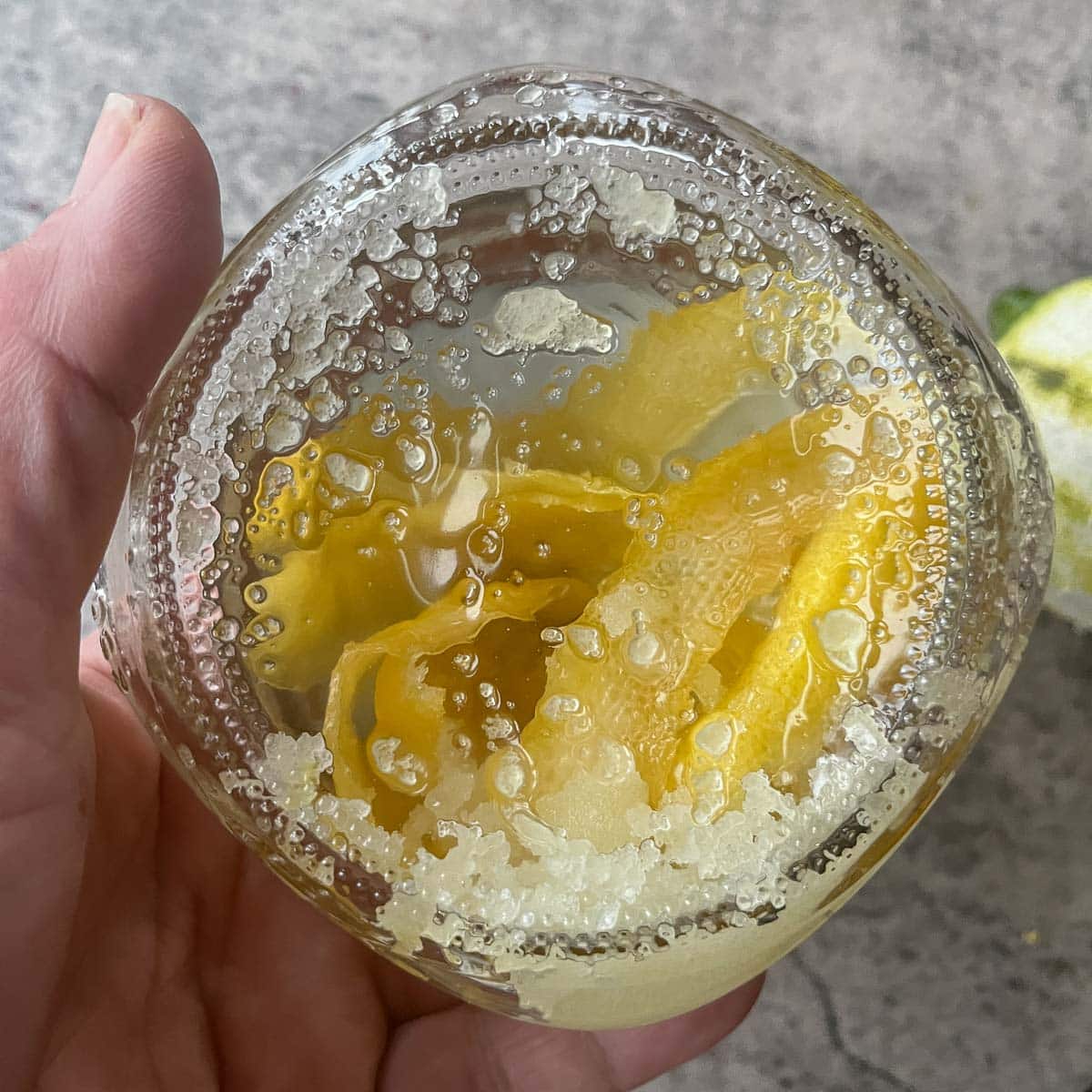
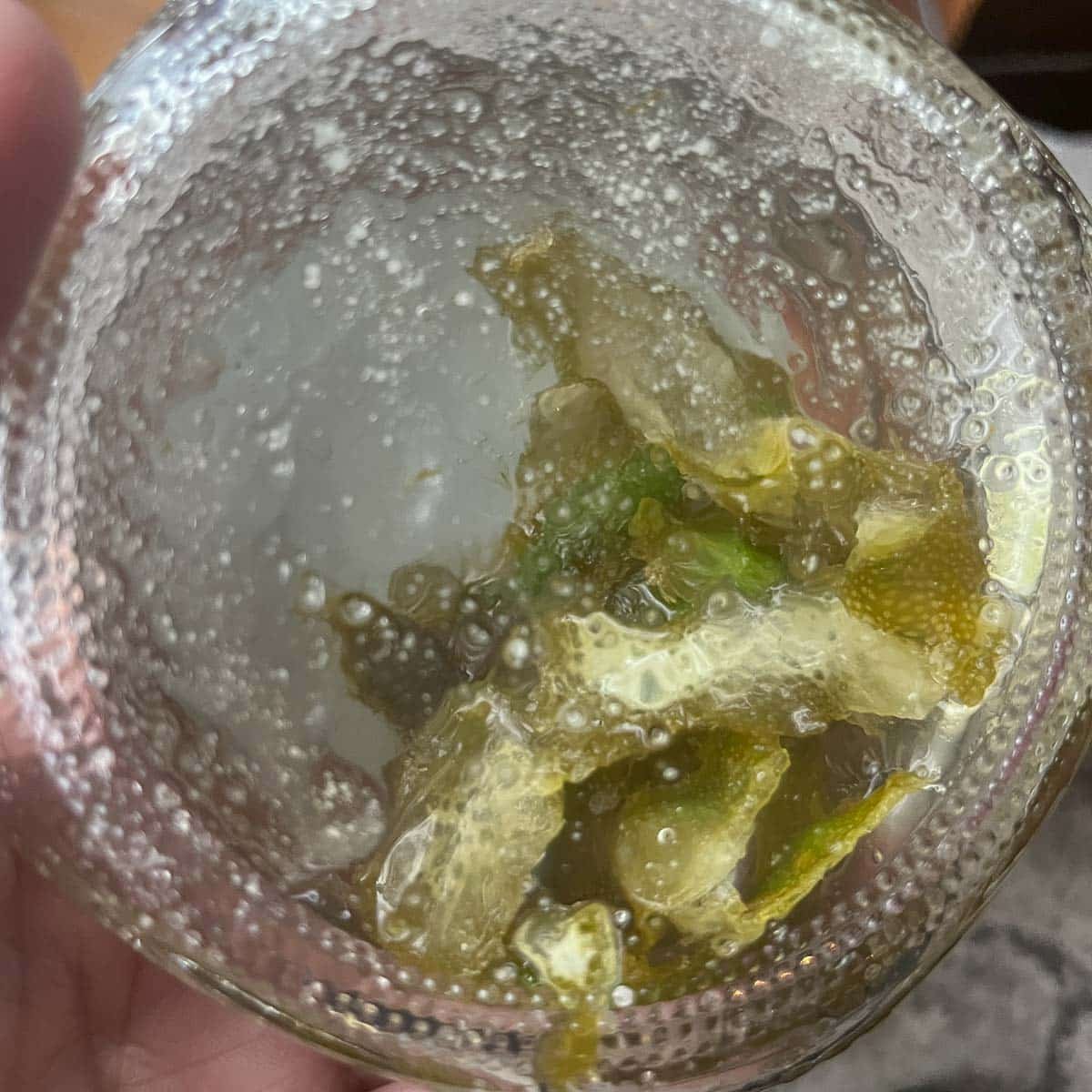
Step 4: Transfer the slurry (oleo citrate) to a large, wide-mouthed quart-sized jar. Place on the scale and tare the scale to zero. Add water, at 16.66x the original weight of the peels. Use some of the water to rinse out the remaining acids in the small jar, then add it to the large jar along with the remaining water.
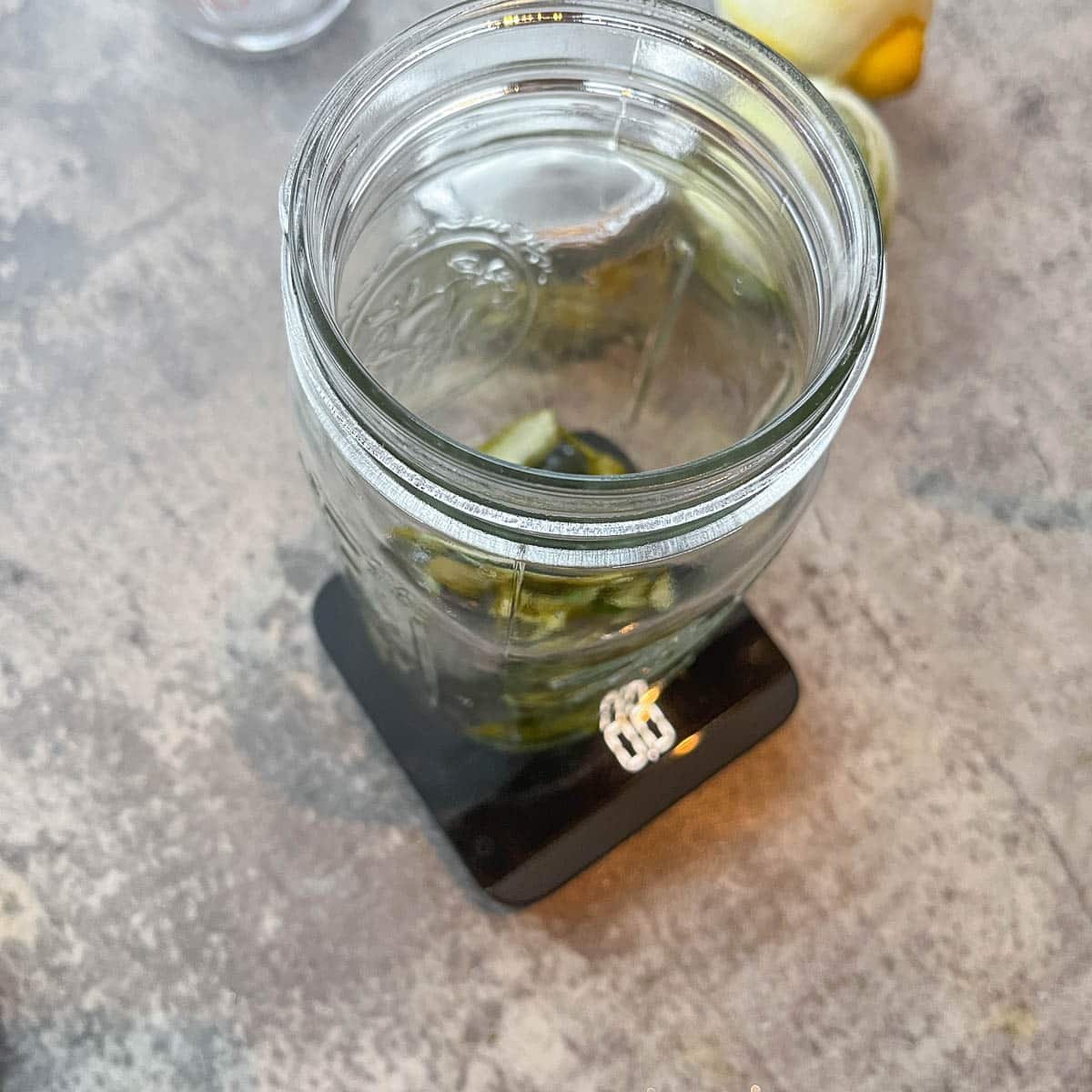
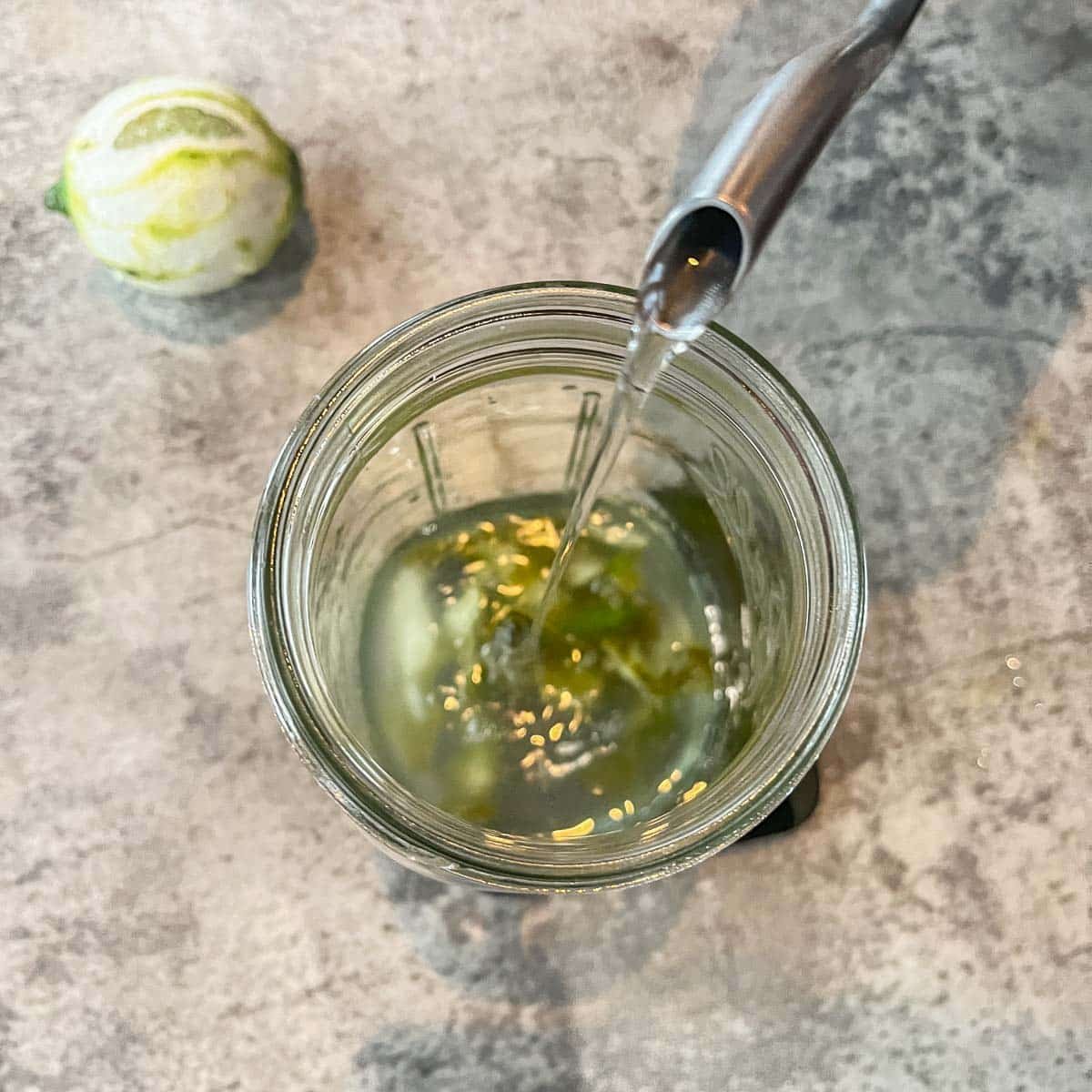
Pro Tip: A gooseneck pouring kettle is ideal to accurately pour water when measuring by weight, and will help you achieve your target weight.
Step 5: Juice the now-peeled citrus fruit and add it to the large jar (no need to weigh it). Fasten the jar lid and shake thoroughly to combine, then set aside for 30 minutes to steep the peels and extract every ounce of flavor.

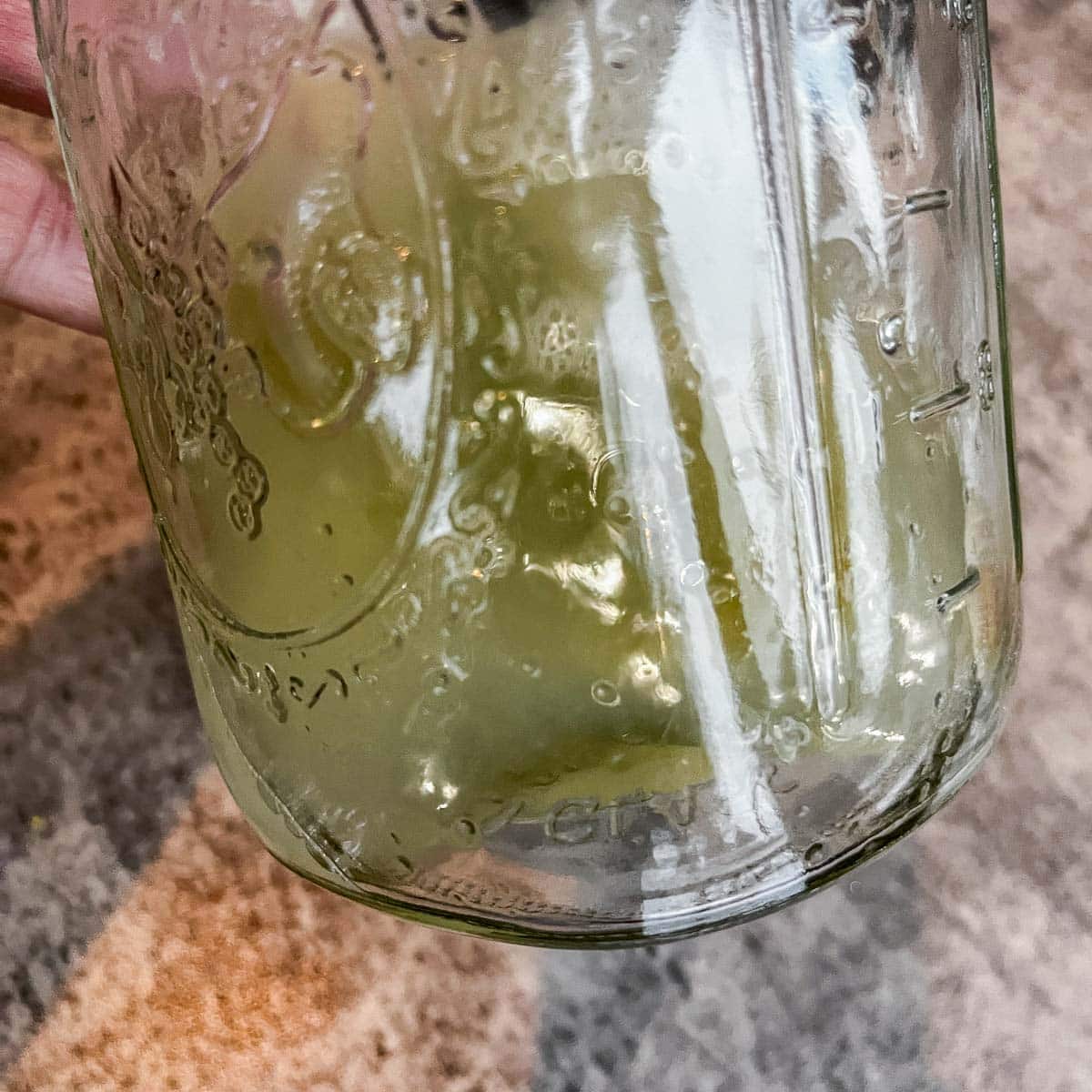

Pro Tip: Another option is to use an immersion blender to blend the mixture until smooth, then strain. However, doing so will shorten the shelf-life of your super juice to 1 week because of the introduction of plant matter into your juice, and the straining process will be much more of a hassle.
Step 6: Filter mixture through a fine mesh strainer or cheesecloth to remove peels, along with any pulp or seeds you may have missed when juicing. Pour super juice through a funnel and into a glass bottle. Label with the type of super juice and the date, then store in the refrigerator for up to one month.
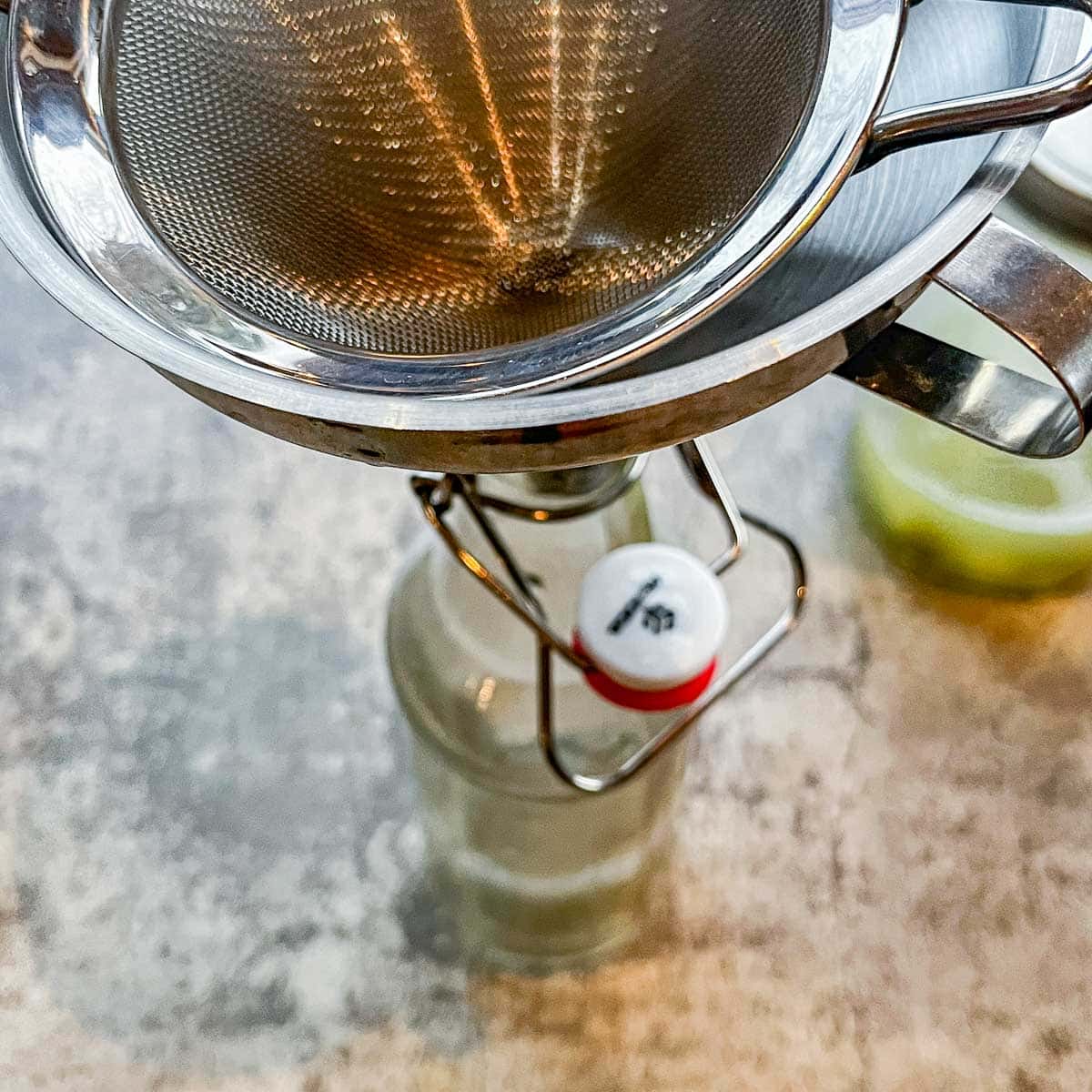

Pro Tip: If you don't have flip-top bottles, you can use an empty glass soda bottle fitted with a pour spout.
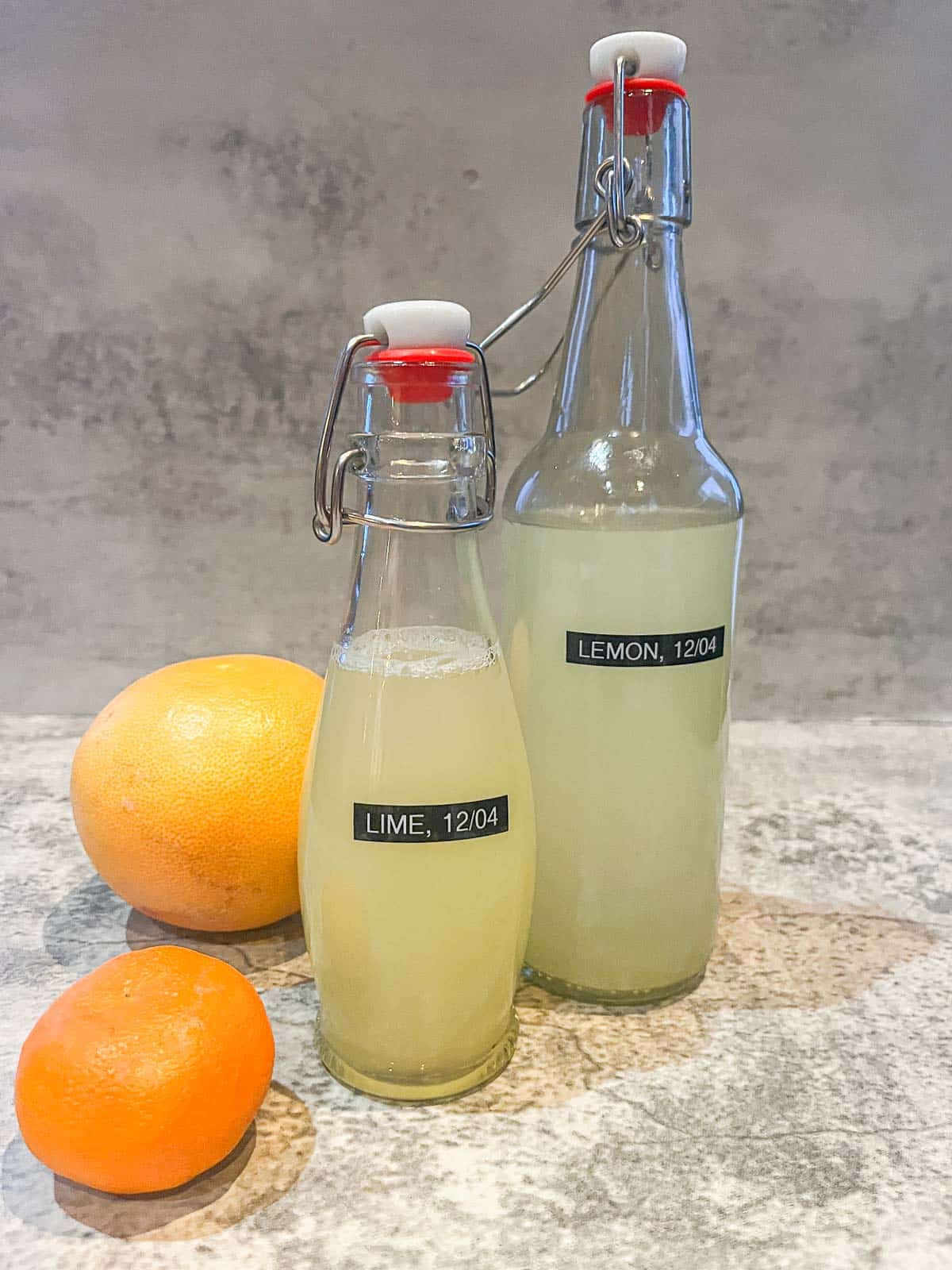
🤷🏻♀️ Recipe FAQS
Super juice is a way to exponentially increase the yield of juice from citrus fruit. This is done by taking advantage of all of the flavor stored in the peels of the fruit, in the form of essential oils, with the addition of acids and water to maintain similar ratios of flavor, acidity, and concentration to what you would get in fresh citrus juice.
Since the amount of fresh juice has been reduced by adding the additional acids and water, it is far more resistant to oxidization than fresh citrus juice and will taste freshest for up to one month.
Absolutely! This is especially useful with orange and grapefruit, which will yield a larger volume of superjuice.
👩🏼🍳 Pro Tips
- Whenever possible, choose organic citrus to avoid pesticide-sprayed fruit or wax buildup on the fruit peels.
- Label with "lime super juice", or whatever type of juice you made, including the date. Discard after a month.
- Freeze extra juice for up to 6 months.

🍎 Cocktail Recipes
If you liked this super juice recipe, check out these other related recipes!
📖 Recipe

How to Make Super Juice
Equipment
- 1 Y peeler
Ingredients
- 1 lime or lemon (or orange, grapefruit)
- citric acid (amount varies by fruit being used)
- malic acid (amount varies by fruit being used)
- filtered water (amount varies by fruit being used)
Instructions
- Thinly peel the citrus using a Y peeler or a vegetable peeler, leaving the pith behind. Weigh the peels in a small jar or tupperware placed on a kitchen scale, set units to grams.
- With the total weight of the peels now determined and written down, multiply this number by the ratios in the chart below. For lemons, no math is required, you will only add citric acid equal to the weight of the lemon peels.
- Reset scale and add the appropriate amounts of acids to the peels, then tighten the lid. Shake jar to evenly disperse the acids among the peels, and let it sit for 1-2 hours, shaking occasionally. During this time, the acids will extract the essential oils from the peels, and will make a slurry.
- Transfer the slurry (oleo citrate) to a large, wide-mouthed quart-sized jar. Place on the scale and tare the scale to zero. Add water, at 16.66x the original weight of the peels. Use some of the water to rinse out the remaining acids in the small jar, then add it to the large jar along with the remaining water.
- Juice the now-peeled citrus fruit and add it to the large jar (no need to weigh it). Fasten jar lid and shake thoroughly to combine, then set aside for 30 minutes to steep the peels and extract every ounce of flavor.
- Filter mixture through a fine mesh strainer or cheesecloth to remove peels, along with any pulp or seeds you may have missed when juicing. Pour super juice through a funnel and into a glass bottle. Label with the type of super juice and the date, then store in the refrigerator for up to one month.
Notes
- After placing the jar on the scale, make sure to reset (tare) the scale back to zero, before adding the peels so that you're not including the weight of the jar.
- A gooseneck pouring kettle is ideal to accurately pour water when measuring by weight and will help you achieve your target weight.
- Another option is to use an immersion blender to blend the mixture until smooth, then strain. However, doing so will shorten the shelf-life of your super juice to 1 week because of the introduction of plant matter into your juice, and the straining process will be much more of a hassle.
- If you don't have flip-top bottles, you can use an empty glass soda bottle fitted with a pour spout.
- Whenever possible, choose organic citrus to avoid pesticide-sprayed fruit or wax buildup on the fruit peels.
- Label with "lime super juice", or whatever type of super juice you made, including the date. Discard after a month.
- Freeze extra super juice for up to 6 months.

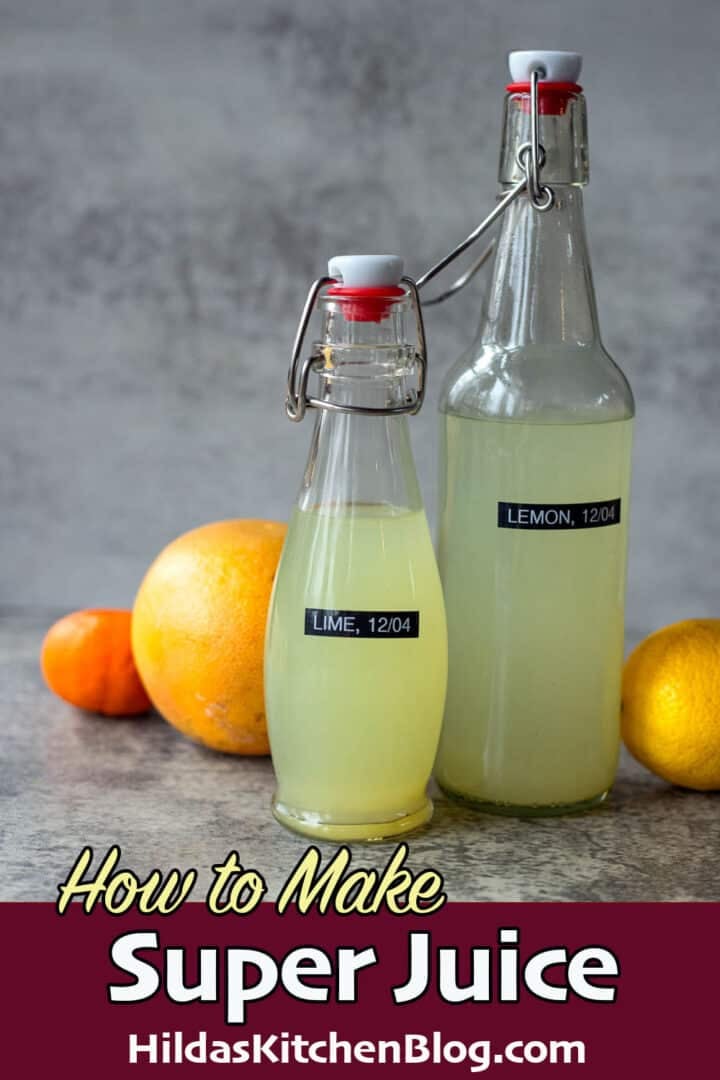
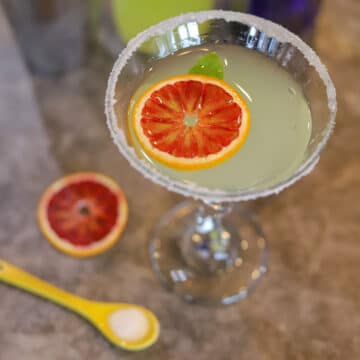


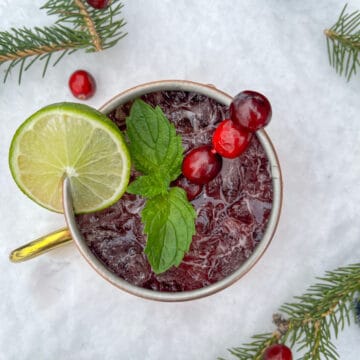
Kevin O says
Do you know the source and type of the 2.5 carbs in the 2-tablespoon serving size? Are they all sugar...part fiber...from juice/oil/acid?
Asking for low-carb nutrition diet.
TIY
Hilda Sterner says
Hi Kevin,
The way the recipe card works is you type in your ingredients and they're automatically calculated. It doesn't get more detailed than that, sorry.